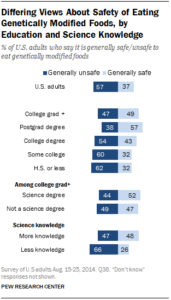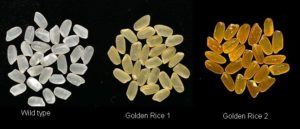Monsanto will help lead the battle against climate change

Monsanto is currently battling crop yield performance and the public's disdain for GMOs. Can Monsanto overcome the challenges it faces to become a leader for the agricultural industry in driving performance and reducing the overall carbon footprint.
Climate Change on Agriculture
The effects of climate change on the global agricultural industry can no longer be ignored. Drought, changing wind patterns, and destructive weather events over the past decade have contributed to roughly a 30% reduction in crop yields. (1) Like productivity and efficiency in a manufacturing process, crops have many factors that affect its year to year yield. There are harder to control environmental aspects such as temperature and moisture supply, but also the threat of insects and weeds destroying the crop. Figure 1 below illustrates a variety of sources that can affect a crop’s yield.
Figure 1: Sources of Yield Variability (2)
The Monsanto Company (referred to as Monsanto) has specialized in the production of genetically modified seeds, also known as Genetically Modified Organisms (GMOs). GMOs have improved crop yields for farmers not only by increasing the number of fruit that the plant produces but also by engineering the plant to be more resilient to pest and weed infestations. (3) According to the United States Department of Agriculture (USDA), the increase in world population is outpacing the improvement in crop yield by roughly 50% (4). In light of this gap, the agricultural industry has an immediate need for scientific innovation to offset this future food supply and demand gap.
Monsanto can’t have its Cake and Eat it too!
As of December 2015, Monsanto began to campaign its model for a “Carbon Neutral Crop Production” (CNCP) that incentivizes farmers to adopt a new process for crop production management that will in theory, reduce agriculture’s carbon footprint to zero. The CNCP crop production management system is comprised of three key areas which includes seed production, crop protection, and sharing data, all of which are services that Monsanto provides to the consumer. (5) Unfortunately, seed production, also defined by Monsanto as “plant biotechnology” or GMOs, and crop protection (use of herbicides and pesticides) have been areas of large public debate. Figure 2 below is a survey conducted in 2014 by the Pew Survey Center showing that 57% of adults in the United States still find that GMOs are “Generally Unsafe.” (6)
Figure 2: Safety of GMO’s Perceived by the United States Public (6)
As for crop protection, Monsanto has generated several large headlines in the news over the past few decades, and most recently has been battling California over their plan to add glyphosate, a main ingredient in the company’s herbicide, to the list of known carcinogens. (7)
Monsanto’s CNCP plan forces the end consumer of the food to decide between two things: protect your health by selecting organic produce or do you choose GMO or reduce the industry’s carbon footprint by selecting herbicide treated crops. At this point, Monsanto can’t have it both ways. With such negative publicity for its products, the company is unable to satisfy both needs, thus ultimately hurting you, the future growing population, and the climate.
Monsanto’s Change for Climate Change
Monsanto has the technology and workforce (roughly 20,000 employees) that can innovate new crops to withstand the effects of climate change and ultimately feed the growing population. Monsanto’s current GMO seed Research and Development (R&D) pipeline focuses on weed resistant plants rather than addressing the climate change concerns of the farmers. (8) With the need for plants to adapt to the lack of water supply and rising temperatures, Monsanto should focus its R&D efforts on creating GMO crops that can handle a versatile climate. In addition to its R&D pipeline, Monsanto needs to focus its efforts on repairing the image of GMO products. A prime example of the public’s disdain for GMO products is Golden Rice. Golden Rice (Figure 3 below) has generated quite a bit of publicity due to its ability to reduce blindness and death in the developing world by providing people with Vitamin-A. However, Greenpeace is attempting to block this life-saving crop from being grown. (9)
Figure 3: Golden Rice compared to White Rice (10)
In addition to the revitalization of GMO seed production, Monsanto has partnered with Novozymes to harvest and develop naturally occurring microbes found in soil to improve crop yields. (8) Partnerships like this, if publicized correctly, can help Monsanto mend its relationship with the public. Monsanto has a unique opportunity to reduce the agricultural industry’s carbon footprint through sustainable farming efforts as well as improving crop efficiencies by engineering crops to withstand the effects of climate change. If the company correctly allocates its funds to not only innovate GMO seeds but also other crop yield improvements, Monsanto can uniquely position itself as the agricultural leader fighting climate change.
(Word Count 762)
1) Henderson, Rebecca M. 2016. “Climate Change in 2016: Implications for Business.” Harvard Business School 4.
2) Canola Council of Canada. 2016. “Basis of Canola Yields.” Canola Council of Canada. Accessed November 2016. http://www.canolacouncil.org/crop-production/canola-grower’s-manual-contents/chapter-1-the-basis-of-canola-yields/the-basis-of-canola-yields.
3) 2016. Pocket K No. 1: Q and A about Genetically Modified Crops. International service for the Acquisition of Agri-Biotech Applications. September. Accessed November 2016.
4) Ronald D. Sands, Carol A. Jones, and Elizabeth Marshall. 2014. Global Drivers of Agricultural Demand and Supply. USDA.
5) Monsanto Company. 2015. Advancing Products and Practices to Fight Climate Change. December. Accessed November 2016. http://www.monsanto.com/improvingagriculture/pages/carbon-neutral-crop-production.aspx.
6) Rainie, Cary Funk and Lee. 2015. “Public Opinion About Food.” Pew Research Center. July. Accessed November 2016. www.pewinternet.org.
7) Reuters. 2016. “Monsanto Sues California over Herbicide Classification.” New York Times. January. Accessed November 2016. http://www.nytimes.com/2016/01/22/business/monsanto-sues-california-over-herbicide-classification.html.
8) Monsanto Company. 2015. 2016 Research and Development Pipeline. Accessed November 2016. http://www.monsanto.com/products/pages/research-development-pipeline.aspx
9) Achenbach, Joel. 2016. “107 Nobel Laureates Sign Letter Blasing Greenpeace over GMOs.” The Washington Post. June. Accessed November 2016. https://www.washingtonpost.com/news/speaking-of-science/wp/2016/06/29/more-than-100-nobel-laureates-take-on-greenpeace-over-gmo-stance/.
10) Golden Rice Humanitarian Board. 2016. “A New Golden Rice Generation.” Golden Rice. Accessed November 2016. http://www.goldenrice.org/Content2-How/how1_sci.php.






Monsanto has moved in many different directions to diversify their holdings over seed production for farmers, however have any advancements been made to combat the increasing salinity of water and soil in areas that will be more prone to coastal flooding with rising ocean levels? The impact of higher salinity on soil microorganisms is significant [1] and one of the common ways to adapt to that is by using the microbes from areas already adapted to these levels. With the acquisition of Novozymes will Monsanto actually commit to this potentially small market of non-GMO crops, or do you think there are some synergies that can be made between the two? With the strict European standards for GMOs this acquisition and focus on microbes may increase Monsanto’s marketshare significantly as they are able to branch into new markets with more resistant seeds and gain even more ground as climate change cause different needs from traditional farming sources, especially in areas affected by changes in ocean levels.
1 Yan et al., Science Direct, “Influence of salinity and water content on soil microorganisms,” http://www.sciencedirect.com/science/article/pii/S209563391530112X accessed November 6, 2010.
Very thought provoking article. I find it interesting that Monsanto, a company that many people consider synonymous with GMOs, continues to prioritize its R&D work to focus on how crops can serve to increase the use of their other products (i.e. Round-Up Herbicide) rather than how they can provide substantial benefits to farmers and consumers. I fear that Monsanto’s clumsy roll-out of GMOs and tone-deaf R&D will imperil the continued deployment of GMOs. I believe that GMOs can offer major benefits to human-kind (by introducing improved nutrients into the food supply–like Golden Rice–and by improving yields in order to feed our planet’s growing population). I hope that, going forward, Monsanto considers these long-term benefits more than the short-term synergies offered by “Round-Up resistant” crops.
Thank you so much for the interesting read!
Chris – I think you raise a great point regarding the “damned if you do, damned if you don’t” conundrum that Monsanto faces with GMO R&D and the fight to reduce crops’ carbon footprint, most classically exemplified by Golden Rice as you mentioned. I see Monsanto’s BioAg Alliance with Novozymes as a step in the right direction to reduce GMOs as a percentage of Monsanto’s portfolio while also solving for crop yield improvements.
Another initiative that is also worth looking into is Monsanto’s recent acquisition of the licensing rights to Crispr from the Broad Institute, the joint Harvard and MIT biomedical and genomic research center (http://www.businessinsider.com/monsanto-ends-gmo-war-crispr-2016-9). Given the public’s strong distaste for GMOs, Crispr might be a more socially acceptable technology for Monsanto to precisely edit genetic code sequences to prevent crops from turning brown or boost resistance to fungal infections. Because these Crispr crops do not have traces of foreign DNA, the USDA has actually taken a more lenient stance on not regulating these crops as conventional GMOs. This represents a very promising future for more carbon-efficient food sources for the human race, and Monsanto has the potential to be on the right side of history.
This MIT Technology Review article is quite interesting for further reading: https://www.technologyreview.com/s/600765/10-breakthrough-technologies-2016-precise-gene-editing-in-plants/. Thanks for this thoughtful post!
It’s clear Monsanto is trying to solve future problems through science, but the way in which it is doing it (compared to Indigo Agriculture, for instance, who focuses on crop resistance to weather patterns instead of pesticides), is troubling. As a result, Monsanto has developed a massive public perception issue (I am one of those that has historically viewed the company in a negative light), which I believe should be a real significant concern for the company: people do not want to eat food that has been genetically modified by Monsanto to be resistant to the chemicals Monsanto then sells farmers. If the company can’t find a different solution whereby it can provide a sustainable solution that does not put at risk, real or perceived, people’s health, then they’ll continue to face a torrent of criticism from the general public. This doesn’t feel like a sustainable approach to corporate and financial sustainability…
Chris, it’s really interesting to see some of that same negativity that you mention in your piece appearing in the comments. It seems like some of the tensions you identify, like golden rice vs. Greenpeace, are questions of differing ideas about what sustainability really means. Rudi Gassner articulates this well, and his idea of being on the “right side of history” speaks to just how deep this question runs.
So there’s a larger issue at play: Not just what companies like Monstanto are doing in response to climate change, but also how customers (and others) perceive those actions and whether those interpretations of how best to respond to climate change are correct. You seem to think that GMOs are a valid response to climate change, despite public distrust. Is that a PR battle Monsanto should fight, or should it just hope that the results it can provide farmers speak for themselves?